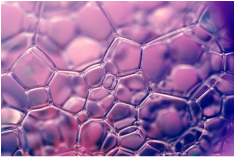
Biosurfactants are not a single compound, each group manufactures different biosurfactants that exhibit differing properties. The most commonly encountered biosurfactants are:
Glycolipids - low molecular weight compounds consisting of carbohydrate and lipid components. Synthesized by representatives of the Rhodococcus, Nocardia, Pseudomonas, Candida genera.
Lipopeptides - low molecular weight compounds consisting of a peptide (protein) and lipid parts, the most well-known are from Bacillus genus.
Fatty acids and phospholipids - fatty acids are formed at alkanes oxidation and may be released into the environment by Rhodococcus sp. Phospholipids are synthesized by representatives of the Acinetobacter and Corinebacterium genera.
Polysaccharides - extracellular polymeric compounds with powerful emulsifying properties. Such biosurfactants formed by a wide range of microbes and are part of the biofilm formation process.
All biosurfactants can be divided into two major groups - low (glycolipids, lipopeptides) and high (extracellular polymers) molecular weight surfactants, which differ in physiology and surface active properties.
Biosurfactants are interesting to scientists as they are highly effective at reducing water surface tension at low concentrations. Additionally, biosurfactants exhibit superior properties to synthetic surfactants including:
· Lower toxicity
· High biodegradability
· Activity over a wide range of pH and salinity values
· Ability of biosurfactants to be manufactured in-situ or from waste compounds in industrial production.

 RSS Feed
RSS Feed